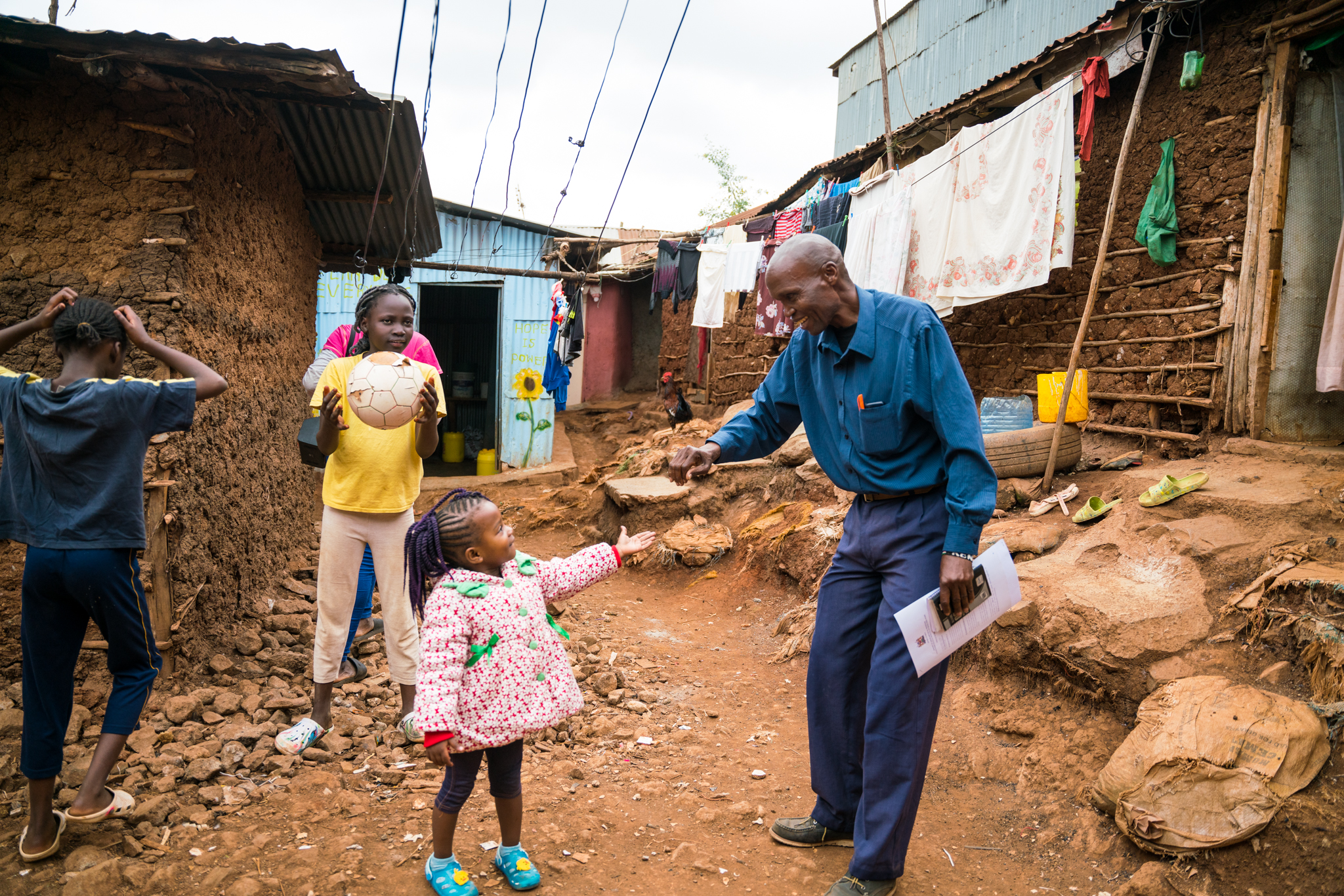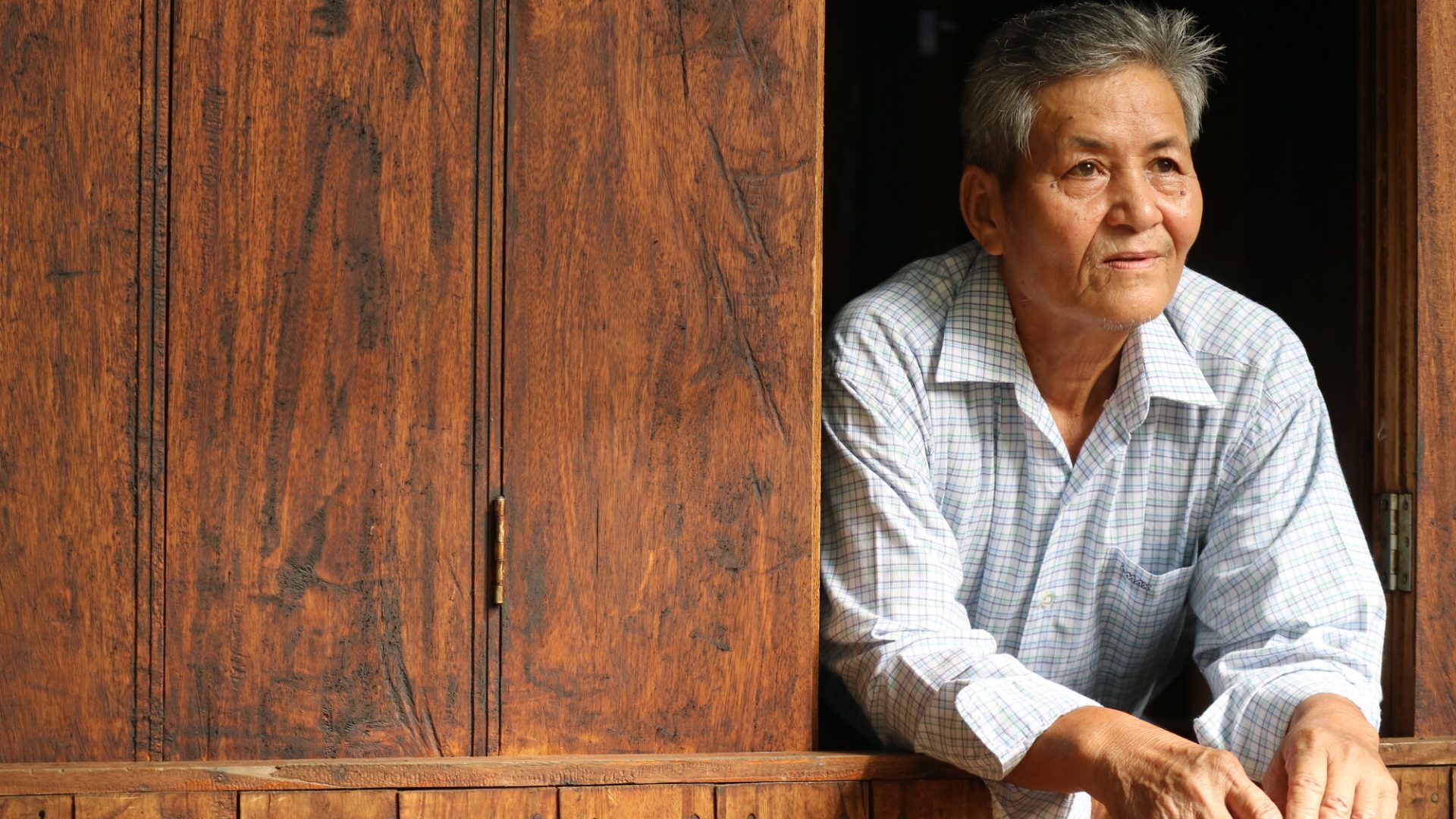Mobilising support and funding
Levels of funding matched the urgency. HelpAge secured unprecedented levels from donors like Comic Relief, The Elton John AIDS Foundation, Sweden’s International Development Cooperation Agency (SIDA) and the Big Lottery Fund.
Older people caring for children could receive support, and they and their peers could be made aware of how the infection could spread and get tested. National governments, UNAIDS and others could be pressured to collect disaggregated data from the over-50s. Older people were given a platform to make their case for support, with some attending key meetings – including at the UN. Creative awareness-raising and advocacy products were also made, such as Age, Sex and HIV: Women’s Stories.
SIDA
SIDA provided two multi-million-pound consecutive five-year projects to support the four-person regional advocacy team’s work in east and southern Africa. The projects also funded regional and national advocacy training workshops in Ethiopia, Kenya, Mozambique, Uganda, South Africa, Tanzania and Zambia so community groups and organisations could influence their targets.
Roseline Kihumba, who has worked for HelpAge in Kenya since 2003 and is now portfolio development and quality manager for the Healthy Ageing team, says this helped include older people in wider HIV strategies and raise both their understanding of the infection and awareness of their own rights – as individuals and as carers.
Dr Douglas Lackey, HelpAge’s advocacy policy adviser in Africa from 2006 until 2016 says: “SIDA had so much vision. We could push for disaggregated data and cash transfer schemes, develop pilots and hold workshops where people were trained and would walk away with a tailor-made strategy to implement. We couldn’t have done any of this without those grants.”
The Big Lottery Fund
The Big Lottery Fund, worth £5m over five years (2008-2013), funded nine projects in Ethiopia, Tanzania, South Africa and Uganda.
Two of these projects aimed to improve data collection to improve support for older people. Another project was on prevention and another on learning and building partnerships, which also strengthened working relationships and built trust. This helped difficult conversations around sex to happen so that prevention, awareness-raising and training materials could be developed, including HelpAge’s HIV and AIDS peer education manual for older people.
The five others were designed by each of the countries. South Africa focused on raising prevention awareness among traditional healers, who were often approached first by people affected by HIV because they were cheaper and more trusted. Uganda focused on inheritance rights so that grandmothers and their grandchildren did not lose their homes. Tanzania prioritised home-base care. The Ethiopia and Kenya projects aimed to improve income security for older carers.
Rachel explains: “This project gave country teams and partners autonomy. That they could implement these projects around advocacy, prevention, data and learning, gave us the ability to join our global and local work, giving us authenticity, building a sense of team and an interest in each other’s work.”

Addressing social protection needs
Social protection – including universal social pensions and cash transfers – was a key recommendation to help improve the livelihoods of older people caring for children orphaned or made vulnerable by AIDS.
An Older Persons Cash Transfer project in 2004, for example, ensured that Kenyans over 70 years-old received KS2,000 per month, to help support rising numbers of children vulnerable to poverty and HIV. Douglas says: “HelpAge was instrumental in advocating for its approval. It had been proposed for some time, but our data showed parliament that this would help support older carers and children they were supporting.”
The decision was a step towards Kenya’s adoption of universal social pensions in 2018.
Expanding global outreach and impact
The prevalence of HIV in Sub-Saharan Africa meant funders prioritised the region, but work continued elsewhere. There were also occasions when different regions came together, for example when HelpAge arranged for older people from Africa and Asia to share how HIV affected their lives at the 15th International AIDS Conference in Bangkok in 2004.
In Cambodia, Thailand and Vietnam, HelpAge worked with network members and Old People’s Associations to raise awareness of the impact of HIV on older women carers, challenge the stigma and push for improved access to treatment and better income support. From 1996, HelpAge worked with communities affected by HIV in northern Thailand, where cases were among the highest in the country.
Older People’s Empathy clubs in Vietnam were established for families of people affected by or at risk of HIV. They could access support with income, health and rights and also support one another against the stigma so they no longer felt isolated.
Thuy Tran, now HelpAge’s country director in Vietnam, helped develop the clubs at HelpAge’s partner Vietnam Women’s Union before joining HelpAge in 2011.
She says: “The clubs supported people who’d lost their children to AIDS or drug use, who had children in prison, and wanted their children back. They wanted peaceful lives for themselves and for their grandchildren, but they felt like they couldn’t continue until they joined the clubs. They were in such deep pain and the stigma was very hard.”
Empowering communities and building allies
New coalitions or alliances with child-focused organisations such as UNICEF and Save the Children emerged – helped also by the work on social protection. HelpAge also worked with REPSSI, a South Africa-based network focusing on the psychosocial well-being of children, and co-authored policy guidelines which helped influence the care of older people caring for children orphaned by AIDS.
There was joint work with other INGOs such as Frontline AIDS, Oxfam, StopAIDS and World Vision, enabling new and increased access to policymakers at the UN, within national governments and civil society.
Rachel says: “One of the things that made our work so successful was our partnerships. Partnering with NGOs representing and advocating for men who have sex with men took HelpAge’s message to a different and wider audience. Our policy wins were borne out of our collaborations. Having a seat at the table to discuss HIV care and support, for example, gave us the opportunity to raise specific challenges faced by older people and their neglect in data and the wider HIV response.”
Data advocacy and policy impact
Advocating at local, national and global levels for better data shows how HelpAge’s HIV work was linked from the bottom up.
In 2005, for example, HelpAge analysis of reported HIV cases in Thailand’s Chiang Mai Province indicated 5% of people infected were over-50. Extrapolating this with national population figures gave an estimation of 50,000 older people nationwide. Likely to be the tip of the iceberg given the stigma, it strengthened the argument for improved data.
Two years later, Kenya’s AIDS Indicator Survey collected data for people aged 50-64 for the first time, revealing a 5% rate of infection compared to 7.4% of 15-49-year-olds.
“While it was obvious, the lack of data meant you could not prove the prevalence was as high as it was,” Douglas explains. “The survey was a breakthrough, and it was shocking.”
Kenya’s next survey in 2012 showed the prevalence of HIV in women aged 50-64 had increased from 5.3% to 7%.
Data from different countries strengthened discussions at the global level. Rachel says: “At meetings with UN colleagues the thing that got people to listen was saying this data only goes up to 49 which suggests anyone over 50 isn’t having sex. And if I was speaking to anyone over 50, they weren’t happy with that.”
Thanks largely to HelpAge, UNAIDS published global estimates including the over-50s for the first time in 2013. This major breakthrough revealed 10% of adults in lower- and middle-income countries with HIV were 50 and over. In high-income countries almost one-third of adults living with HIV were 50 and above.
A year later, the UNAIDS Gap Report recognised that the over-50s were overlooked, and the WHO’s Global Update on the Health Sector Response to HIV urged for older people to have access to HIV prevention, treatment and services.
HIV began being deprioritised across the sector and among donors, perhaps due to new treatments helping people to live with HIV. HelpAge’s focus shifted accordingly, focusing on wider health issues among older people.
However, UNAIDS continues to publish HIV data on older people, with their data from 2023 showing a quarter of people living with HIV are 50 and over. With the rising numbers of older people living with HIV thanks to treatment, perhaps HIV and ageing will become a priority again.


